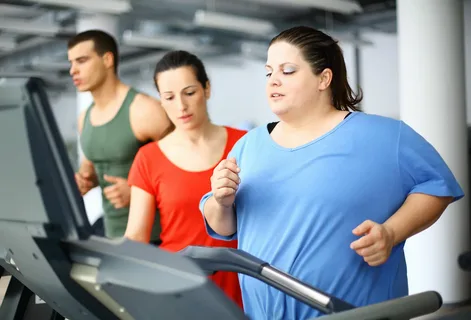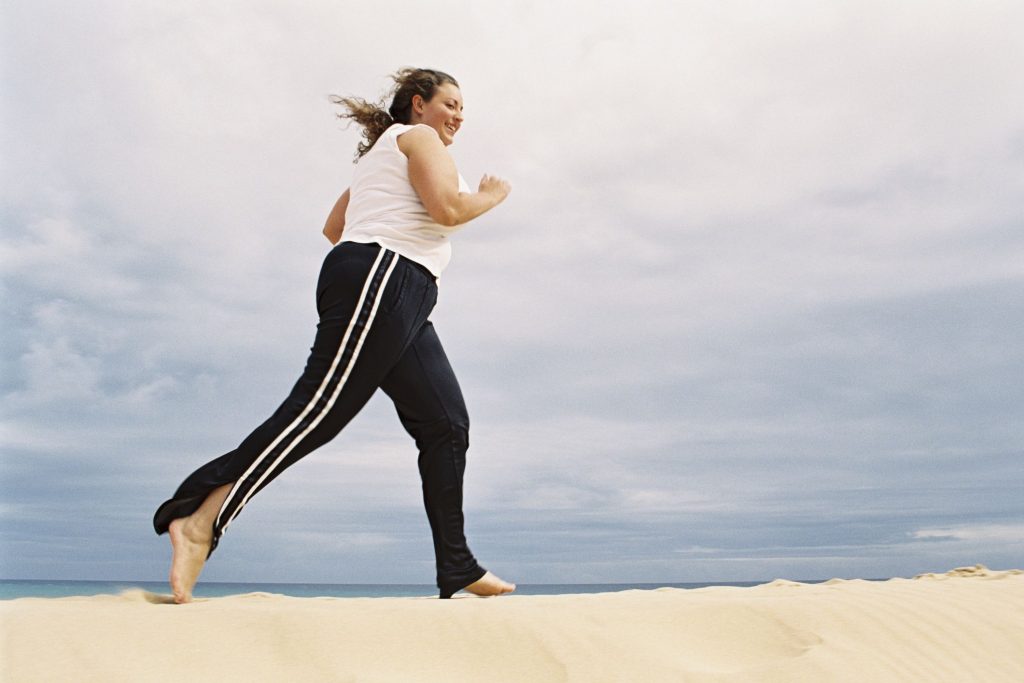Updated on September 02, 2023
Medically reviewed by Amy Kwan, PT
Aerobic exercise involves physical activity that increases your breathing and heart rate to fuel your body with oxygen-rich blood. Aerobic exercise helps strengthen your heart muscle, improves your lung function, and increases circulation and healthy blood flow throughout your body.
This article will describe the benefits of aerobic exercise, examples, and how to get started.
What Is Aerobic Exercise?
Aerobic means “with oxygen,” so aerobic exercise is any physical activity that involves increased amounts of oxygen throughout your body.

As you exercise, your muscles require increased oxygen to contract for a prolonged period.
With aerobic exercise, cells undergo cellular respiration, in which oxygen and other molecules are converted into adenosine triphosphate (ATP), the primary energy source for cells.1
Your heart rate will increase to pump more oxygen-carrying blood throughout the body to supply more oxygen to your muscles. Your breathing rate will also increase to bring more oxygen into the body and the bloodstream.
Because aerobic exercise requires increased functioning of your heart and lungs or cardiovascular system, aerobic exercise is often called cardiovascular exercise, or “cardio.”
EXERCISES FOR OVERWEIGHT/OBESE PEOPLE. SET NO. 3: POWER EXERCISES WITH DUMBBELLS. WEIGHT IS SELECTED INDIVIDUALLY. IT IS RECOMMENDED TO START WITH 1-2 KG
Aerobic vs. Anaerobic Exercise
Aerobic exercise, or “with oxygen,” requires increased oxygen to supply working muscles over a prolonged period, while anaerobic training, or “without oxygen,” involves short bursts of activity in which muscles are fueled by the breakdown of their energy stores.
Benefits of Cardio
Cardio, or aerobic exercise, is extremely beneficial for maintaining the healthy functioning of your entire body. Regular cardiovascular exercise can:2

- Improve heart function and lower resting heart rate
- Improve lung function
- Improve oxygen supply throughout the body
- Improve circulation
- Decrease high blood pressure (hypertension)
- Decrease inflammation throughout the body
- Improve mood and energy
- Decrease risk of developing conditions like diabetes, heart disease, and stroke
- Lower your blood sugar
- Lower high cholesterol and triglycerides
- Increase weight loss
Examples of Aerobic Exercise
Aerobic exercises are generally any exercises that get your body moving for a prolonged period of time, such as:

- Walking
- Jogging
- Running
- Hiking
- Bicycling
- Swimming
- Jumping rope
- Dancing
- Stair climbing
- Rowing
- Playing sports
EXERCISES FOR OVERWEIGHT | OBESE PEOPLE. SET NO. 1: GENERAL EXERCISES TO STRENGTHEN MUSCLES AND IMPROVE JOINT MOBILITY
How Much Aerobic Exercise Should You Do?
Adults should participate in one of the following physical activity durations each week to promote optimal heart health and lower the risk of developing atherosclerotic cardiovascular disease (ASCVD):3
- 150 minutes of moderate-intensity physical activity
- 75 minutes of vigorous-intensity physical activity
- An equivalent combination of moderate and vigorous physical activity
Exercise intensity is grouped into the following categories:
- Light intensity: Walking slowly, cooking, light housework
- Moderate intensity: Brisk walking (2.4-4.0 miles per hour), bicycling (5-9 miles per hour), dancing, active yoga, recreational swimming, gardening, vacuuming, raking leaves
- Vigorous intensity: Jogging, running, hiking, bicycling (more than 10 miles per hour), swimming laps, jumping rope, aerobics, weight lifting, stair climbing, shoveling snow
How to Get Started
Sedentary individuals should start slowly and gradually increase exercise intensity, duration, and frequency.

This allows the heart, lungs, and muscles to acclimate to the change in physical activity. For those new to exercise, aerobic exercise can be divided into 10-minute sessions to help make exercise more doable and achievable.
Shorter durations of physical activity of 10 minutes or less can be just as beneficial as longer durations greater than 10 minutes, as long as the total duration of exercise throughout the week remains the same. Fifteen 10-minute exercise sessions divided throughout the week, for example, can have similar benefits as five 30-minute sessions.3
If you cannot meet these recommendations, it is typically better to participate in some form of exercise rather than no exercise unless your healthcare provider advises you to avoid physical activity for medical concerns.
Always consult with your healthcare provider before beginning or increasing any exercise program to ensure that your heart, lungs, and blood vessels are healthy enough to support the increased demands of aerobic exercise.
Summary
Aerobic exercise requires increased oxygen to supply working muscles, which causes your heart rate and breathing to increase. Aerobic exercise, also called “cardio,” involves physical activity performed over a prolonged period. Aerobic exercise includes walking, hiking, running, dancing, bicycling, and playing sports.
EXERCISES FOR OVERWEIGHT/OBESE PEOPLE. HYDROTHERAPY MODULE: SWIMMING AND HYDROTHERAPY, EXERCISES IN THE WATER
This type of exercise helps to improve your heart and lung function, increase circulation, and decrease elevated levels of blood pressure, cholesterol, and inflammation. When beginning or increasing your aerobic exercise, start slow and gradually increase over time. But, first, make sure your healthcare provider clears you.
Aerobic exercise is important to help maintain optimal heart health and lower the risk of developing inflammatory conditions that affect your entire body. Start off slowly and gradually increase your physical activity intensity, frequency, and duration to allow your body to adapt to the new activity.
By Kristen Gasnick, PT, DPT
Kristen Gasnick, PT, DPT, is a medical writer and a physical therapist at Holy Name Medical Center in New Jersey.
Recommended: Does Standing Burn Calories?
FREQUENTLY ASKED QUESTIONS
-
How many calories do you burn with aerobic exercise?
Calories burned with aerobic exercise will vary based on your weight, individual fitness level, exercise intensity, and duration of physical activity.
-
Is yoga an aerobic exercise?
Certain forms of yoga, such as power yoga, also called vinyasa yoga, is a form of aerobic exercise that requires brisk changes in movements and poses.
-
Do cardio workouts help lose belly fat?
Cardio workouts increase your energy expenditure as your heart and lungs have to work harder to supply your exercising muscles with oxygenated blood. This increased workload burns more calories and helps to break down excess fat tissue, which can help you lose fat, including belly fat.
-
Is aerobic exercise good for weight loss?
Aerobic exercise is good for weight loss as it increases your energy expenditure as your heart and lungs have to work harder to supply your exercising muscles with oxygenated blood. This increased workload burns more calories and helps to break down fat tissue, which can help you lose weight.

DEMO VERSION OF GRS WORKOUTS FOR REHABILITATION OF PATIENTS with obesity ON YOUTUBE
Our website presents sets of exercises for the rehabilitation of the patients with obesity in the following areas:
-
EXERCISES FOR OVERWEIGHT/OBESE PEOPLE. SET NO. 1: GENERAL EXERCISES TO STRENGTHEN MUSCLES AND IMPROVE JOINT MOBILITY
-
EXERCISES FOR OVERWEIGHT/OBESE PEOPLE. SET NO. 2: POWER EXERCISES WITH A GYMNASTIC ELASTIC BAND/TERABAND
-
EXERCISES FOR OVERWEIGHT/OBESE PEOPLE. SET NO. 3: POWER EXERCISES WITH DUMBBELLS. WEIGHT IS SELECTED INDIVIDUALLY. IT IS RECOMMENDED TO START WITH 1-2 KG
-
EXERCISES FOR OVERWEIGHT/OBESE PEOPLE. HYDROTHERAPY MODULE: SWIMMING AND HYDROTHERAPY, EXERCISES IN THE WATER
Sources
https://www.verywellhealth.com/aerobic-exercise-5218112
- National Geographic. Cellular respiration.
- Patel H, Alkhawam H, Madanieh R, Shah N, Kosmas CE, Vittorio TJ. Aerobic vs anaerobic exercise training effects on the cardiovascular system. World J Cardiol. 2017;9(2):134-138. doi:10.4330/wjc.v9.i2.134
- Arnett DK, Blumenthal RS, Albert MA, et al. 2019 ACC/AHA Guideline on the primary prevention of cardiovascular disease: a report of the American College of Cardiology/American Heart Association Task Force on Clinical Practice Guidelines. Circulation. 2019;140(11):e596-e646. doi:10.1161/CIR.0000000000000678







